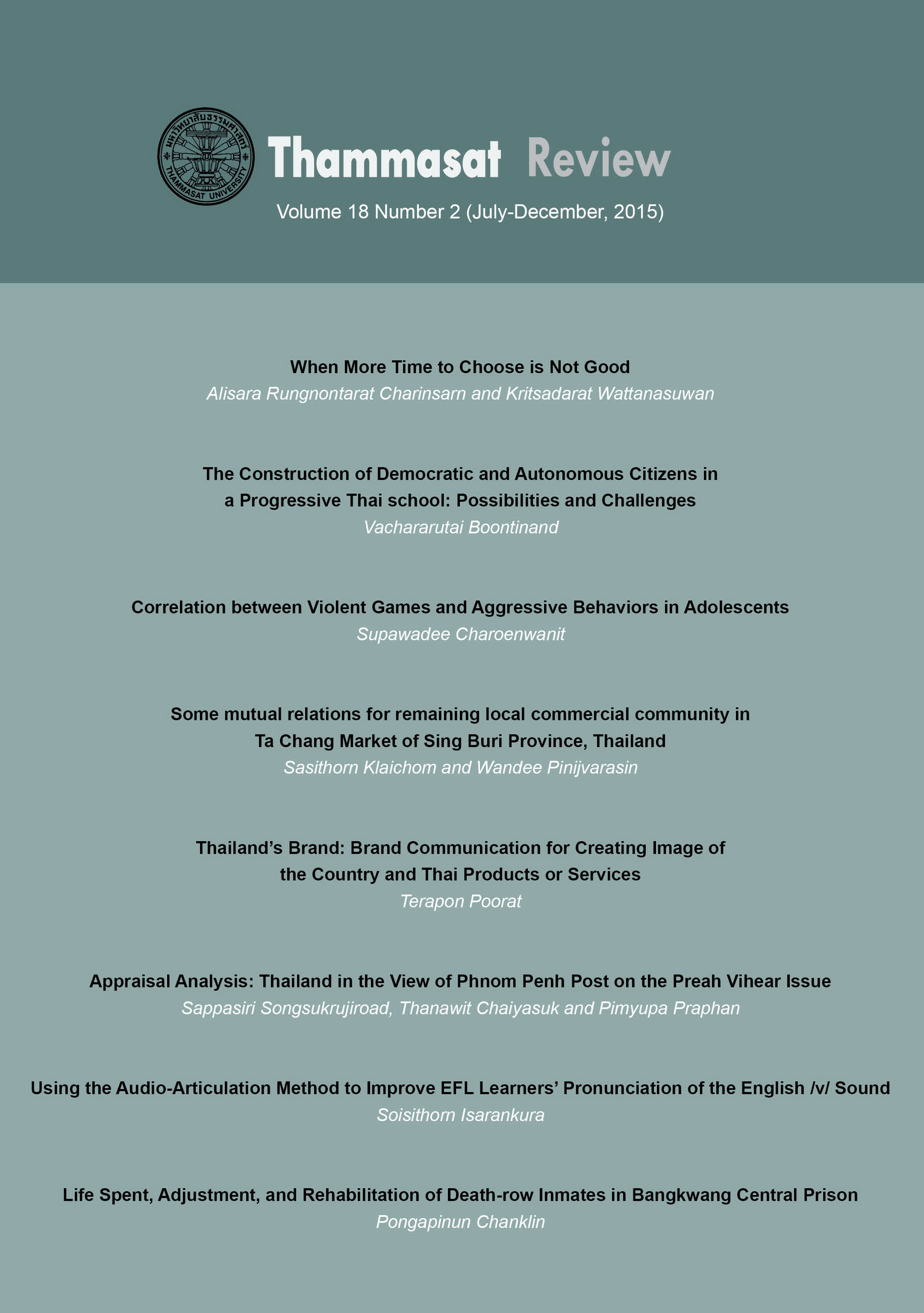Using the Audio-Articulation Method to Improve EFL Learners’ Pronunciation of the English /v/ Sound
Abstract
This study examines variants of the English /v/ sound among Thai EFL learners and tests the effectiveness of the Audio-Articulation Method (AAM) in improving the learners’ pronunciation of the /v/ sound in word-initial, medial, and final positions. Sixty second-year English majors, classified into high and low groups based on their relative English proficiency, digitally recorded their oral reading of thirty sentences each of which contains one word with the /v/ sound before and after the integration of the AAM. The results reveal that the /v/ sound was produced in five variants: [v], [w], [b], [f], and [Ø]. The high group used [v] most frequently in all positions during the pre-test while the low group used [w] and [b] most often in word-initial and word-final positions, respectively. After exposure to the AAM, the use of the target [v] increased significantly in both groups. The rates for [w] and [b] reduced at a statistically significant level. Conversely, the use of [f] increased in all positions, suggesting that the learners were attempting to use the right point of articulation in order to approximate the target [v]. The results of the study show that the Audio-Articulation Method had a positive effect in improving the students’ pronunciation of the English /v/ sound.
Keywords: Fricatives, consonants, segmentals, /v/ variants, intelligible pronunciation
Downloads
How to Cite
Issue
Section
License
The opinions and ideas expressed in all submissions published in Thammasat Review are solely that of the author(s) and do not necessarily reflect that of the editors or the editorial board.
The copyright of all articles including all written content and illustrations belong to Thammasat Review. Any individuals or organisation wishing to publish, reproduce and distribute a particular manuscript must seek permission from the journal first.








